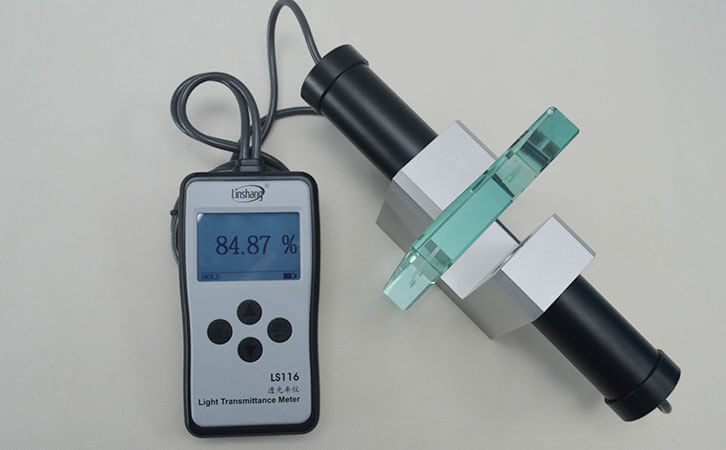What Factors Affect the Transmittance of Glass?
Glass has excellent properties and can be used in a variety of applications. In interior decoration, stained glass and hot-melt glass can be used with various styles. Tempered glass, laminated glass and other safety glasses are suitable for occasions where personal safety is required; Frosted glass may be used when you pay attention to privacy.
1. What factors affect the glass transmittance
The reflectance increases with the increase of the incident angle, but when the incident angle is less than 40 degrees, the reflectivity does not change significantly. When the incident angle is greater than 70 degree, the reflectivity increases sharply with increasing incident angle. The reflectivity also increases as the difference in refractive index between the two media increases. For the interface between glass and air, the refractive index of air is n0 = 1, the refractive index of glass is n1 = 1.52. The refractive index is fixed, so the main factor affecting reflection is the incident angle.
Generally, the darker the light absorption loss is, the smaller the transparency coefficient is. In order to reduce the light absorption loss of glass, lighter color glass can be used. In addition, the transmission loss of glass decreases exponentially with the glass thickness. It can be seen that the smaller the thickness, the smaller the light transmission loss.
Scattering loss. The scattering loss of glass mainly occurs in composite glass. Due to the existence of particles inside the glass that can change the direction of light, part of the light cannot be imaged and loses its effect. The scattering loss of light depends on the scattering point. When the scattering point is the same order of magnitude as the wavelength of the incident light wave, the light scattering is greater. The scattering reaches its limit when the diameter of the particle is about 1/2 of the wavelength of the incident light.
2. Which glass has better transmittance for one-way glass and frosted glass?
Compared with frosted glass, one-way glass should have better light transmission. What is one-way glass and what is the transmittance of frosted glass? Let's take a look.
Unidirectional glass with a metal coating on the surface. Its characteristics are that the side with strong light looks like a mirror. The side with dark light looks colored and transparent. You can also paste a layer of unidirectional see-through film on the transparent glass to achieve the same effect. The disadvantage is that you can't see the inside outdoors during the day, but when you turn on the lights indoors at night, because the indoor light is strong, you can't see clearly when you look inside and you can see a mirror inside.
Generally, the transmittance of frosted glass is about 90% ~ 95%. There are many ways to reduce its transmittance. You can paste frosted paper or stickers with low transmittance on the glass. Decorative paintings are hung on the back of the sand glass to make cabinets.
3.Transmittance detection
Linshang new LS116 advanced light transmittance meter is an improvement on the resolution and the thickness of the tested material. When the light transmittance is within 0% -10%, the resolution is 0.001%. When the light transmittance is from 10% -100, the resolution is 0.01%. The measurement thickness ranges from transparent materials within 40mm to transparent materials within 100mm. The accuracy of ± 1% has been proved by many Chinese metrology institutes.
The advanced light transmittance meter LS116 has added functions that can set whether to turn off automatically or not.
- Linshang Insulated Glass Unit Measuring Tools
- Spectacle lens anti-blue light detection---blue-violet light transmittance meter
- Measurement of Optical Density
- Difference of LS116 Transmission & LS117 OD Meter
- Difference between LS116 and LS117 Light Transmittance Meter
- What’s the Difference Between Point Light and Parallel Light Transmittance Meter
